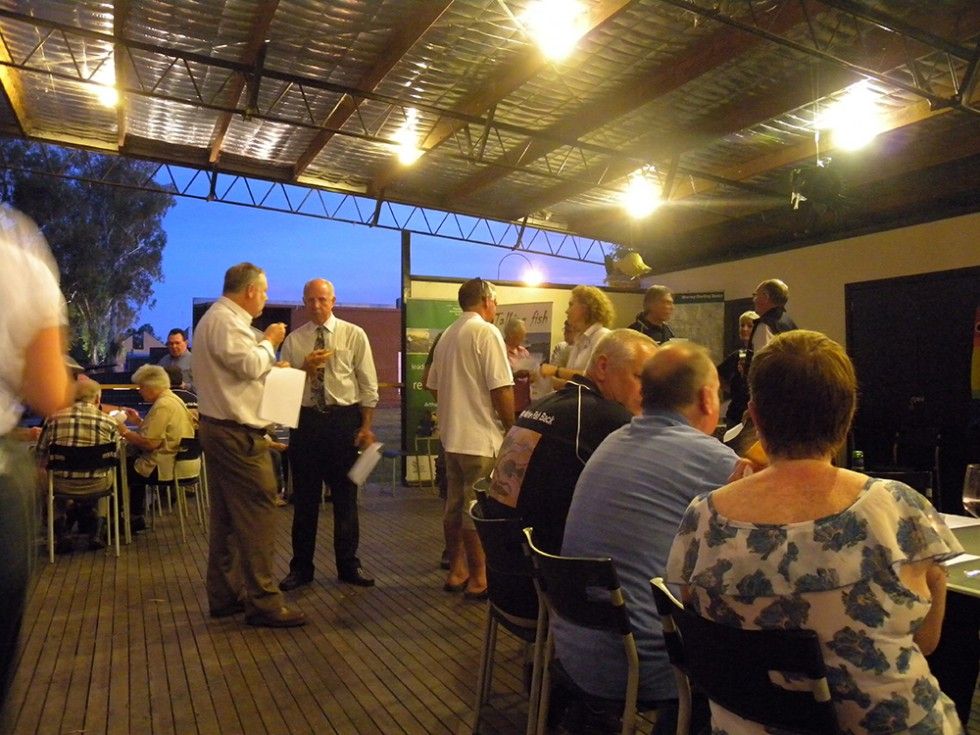Local governments across the Basin undertake a broad range of roles and responsibilities, and these encompass some involvement in environmental issues including water management, pest species management, recreational values (including recreational fishing) and protection of natural values. Where towns are close to aquatic environments, there is always potential to engage with local governments.
Local government staff can provide input on environmental strategies, or specific issues such as aquatic weed management, fish passage, riparian rehabilitation and resnagging. The 10 Top Tips for Fish Friendly Council flyer helped create a discussion and provide a framework for local councils to be involved in the Native Fish Strategy. It is always worthwhile inviting Local government staff to events such as Native Fish Awareness week activities and forums and workshops.


Case Study: The Loudoun Weir Fishway
The Loudoun Weir on the Condamine River, Dalby was long recognised as a priority barrier for fish passage, with the existing fishway requiring modification to operate effectively. The Condamine Alliance worked closely with partners, including the Western Downs Regional Council, the MDBA, Qld DAFF, engineers, local businesses and many others to modify the fishway and implement an operational plan.
In the initial stages, there was a lack of understanding by some council staff and local community as to the importance of providing fish passage at this site due to concerns regarding the cost and water usage. There was a perception that it would reduce available water to Dalby, which used it as its water supply.
It was apparent that a substantial and sustained effort in engaging with local council staff at different levels was required to make headway. Over time, strong relationships formed, with the variety of partners gaining a better understanding of each other’s concerns as well as the benefits of providing fish passage. An operational plan for the fishway was developed and worked through with broad consultation of partners.
In 2009, the new fishway was launched, opening up over 100km of river for migrating fish. The local council is now supportive of the program, with staff manually operating the structure when there are appropriate flows. The council and the local community can now actually see the benefits of this work, with fish congregating at the fishway, and fish numbers in the area increasing.
